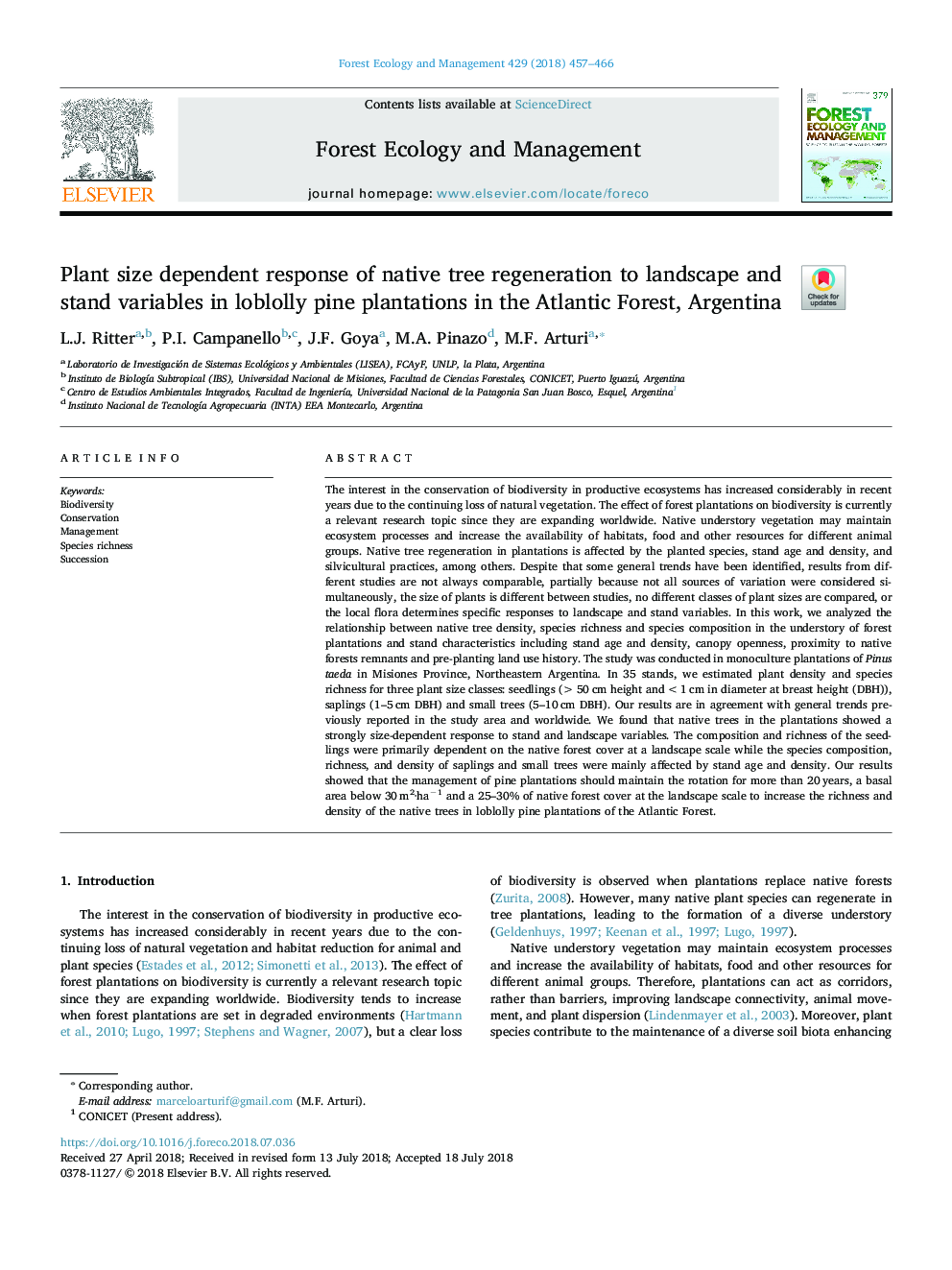| Article ID | Journal | Published Year | Pages | File Type |
|---|---|---|---|---|
| 6541457 | Forest Ecology and Management | 2018 | 10 Pages |
Abstract
The interest in the conservation of biodiversity in productive ecosystems has increased considerably in recent years due to the continuing loss of natural vegetation. The effect of forest plantations on biodiversity is currently a relevant research topic since they are expanding worldwide. Native understory vegetation may maintain ecosystem processes and increase the availability of habitats, food and other resources for different animal groups. Native tree regeneration in plantations is affected by the planted species, stand age and density, and silvicultural practices, among others. Despite that some general trends have been identified, results from different studies are not always comparable, partially because not all sources of variation were considered simultaneously, the size of plants is different between studies, no different classes of plant sizes are compared, or the local flora determines specific responses to landscape and stand variables. In this work, we analyzed the relationship between native tree density, species richness and species composition in the understory of forest plantations and stand characteristics including stand age and density, canopy openness, proximity to native forests remnants and pre-planting land use history. The study was conducted in monoculture plantations of Pinus taeda in Misiones Province, Northeastern Argentina. In 35 stands, we estimated plant density and species richness for three plant size classes: seedlings (>50â¯cm height and <1â¯cm in diameter at breast height (DBH)), saplings (1-5â¯cm DBH) and small trees (5-10â¯cm DBH). Our results are in agreement with general trends previously reported in the study area and worldwide. We found that native trees in the plantations showed a strongly size-dependent response to stand and landscape variables. The composition and richness of the seedlings were primarily dependent on the native forest cover at a landscape scale while the species composition, richness, and density of saplings and small trees were mainly affected by stand age and density. Our results showed that the management of pine plantations should maintain the rotation for more than 20â¯years, a basal area below 30â¯m2·haâ1 and a 25-30% of native forest cover at the landscape scale to increase the richness and density of the native trees in loblolly pine plantations of the Atlantic Forest.
Related Topics
Life Sciences
Agricultural and Biological Sciences
Ecology, Evolution, Behavior and Systematics
Authors
L.J. Ritter, P.I. Campanello, J.F. Goya, M.A. Pinazo, M.F. Arturi,
